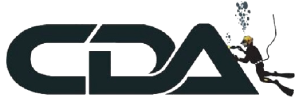ADAS SSBA to 50 M
4
weeks
15
Dives
$14,000
Price AU
50M
Depth
100%
Employment
2024 ADAS Diving and Supervisor Course Dates are online!
Share This Course:
Overview
The ADAS SSBA to 50M Part 3 certificate extends beyond the scope of Part 2, with the maximum depth of diving extended to 50 meters using Surface Supplied Breathing Apparatus (SSBA). This course is conducted over a 4 week period and greatly increases a diver’s ability to operate under working situations and is designed to get a diver operating at an offshore industry level. Students at this level will be introduced to hyperbaric chamber operations, hot water suits, hot water generators, wet bells & hydraulic tools.
Successful completion of this course results in the following Vocational Education and Training (VET) qualification: Certificate IV in Hyperbaric Operations (Surface-supplied diving to 50m). National Qualification Code 11006NAT awarded by ADAS, RTO number 88104
More information reference; unit standard, course competencies & prerequisites can be found on the ADAS website: Click Here
If you aspire to be an underwater welder, CDA’s IMCA approved offshore diving course is the place to star
Completing this course will help you:
- Find offshore work as a commercial diver / underwater welder
- Work in salvage on offshore wrecked ships
- work on offshore oil rigs and windfarms
- pre-requisite of our most prestigious course - ADAS Part Four (Closed Bell to 300 M)
Who is the course for?
The ADAS part three course or air diving to 50 metres, is an internationally certified qualification having recognition from the international marine contractor’s association (IMCA.) This course is for aspirational divers who do not want to spend there career onshore on fish farms or living contract to contract as a onshore civil diver.
The SSBA to 50 M course is for the diver looking to become an underwater welder, salvage diver or just someone who wants to have the option to make big dollars when the chance arises.
The ticket will allow you to work in any country in the world and on any dive site if the depth is under 50 metres. Divers will also learn to be hyperbaric chamber operators during the course.
Finally the course is for those crazy enough to dare to become saturation divers as you must hold your ADAS part three ticket for at least one year before enrolling on this course.
Imca Recognition and international acceptance
Our Surface Supplied diving course is run by international instructors and offshore supervisors experienced in Deep Sea diving.
The ADAS Part Three (SSBA to 50M) course is fully accepted by IMCA and is recognised as equivalent to:
- The British HSE Surface Supplied Diving with HSE Surface Supplied Diving Top up certificate.
- The Candian Unrestricted Surface Supplied Diver to 50m – [Surface Supplied & Surface Supplied
(Top-Up)] certificate. - The Danish Erhvervsdykker – (Air Diving Qualification) – [SCUBA, Surface Supplied & Surface Supplied (Top-Up)] Certificate.
- The French Classe 2 mention A – [SCUBA, Surface Supplied & Surface Supplied (Top-Up)] certificate.
- The Dutch Duikarbeid Categorie B – [SCUBA, Surface Supplied & Surface Supplied (Top-Up)] certificate.
- The Norwegian Dykkersertifikat Klasse I – Overflateorientert dykker – (Diving Certificate Class I –
Surface Orientated Diver) – [SCUBA, Surface Supplied & Surface Supplied (Top-Up)] certificate.
Student Pre-Requisites
To enrol in our ADAS part three (Surface Supplied Air to 50 M) course you must first have completed our ADAS part two or international equivalent. Your ADAS tickets need to be current. For most students going directly from ADAS part two, this is easily met!
To meet the AS/NZS 2299.1 and ADAS requirements anyone who joins a course at CDA, or any other ADAS school is required to have a current first aid, 02 provider and CPR certification.
in general if the card has first aid on it, and the course was about a day long. it is likely this will be accepted. though if you are not sure if your first aid ticket is accepted, you can contact us any time to find out.
Click here to learn more about Diver first aid and 02 provider training.
Before we can allow anyone to dive, they must hold an occupational dive medical. I am sure you have AS/NZS 2299.1 memorised now, and you guessed right. your medical, needs to be in accordance with this standard.
Because of this, the doctor who assesses you for medical fitness is required to be trained in hyperbaric medicine and certified as an occupational diving doctor.
you can find dive doctors using the SPUMS website below
https://www.spums.org.au/
Units of Competency
- BSBWHS211 Contribute to health and safety of self and others
- NAT11006001 Work safely in hyperbaric operations
- NAT11006002 Maintain effective working relationships within dive or hyperbaric operations team
- NAT11006003 Apply knowledge of anatomy, physiology and diving physics to diving
- NAT11006004 Assess diving casualty and assist with first aid and treatment of diving illnesses and injuries
- NAT11006028 Assist as an attendant inside a hyperbaric chamber
- NAT11006038 Prepare, operate and maintain twin-lock compression chamber
- AT11006056 Undertake underwater deployment for a surface-supplied diving operation to 50m
- NAT11006057 Participate in stage or wet bell diving operations
- NAT11006060 Use hot water suit and hot water supply system in a diving operation
- NAT11006061 Contribute to health and safety in diving operations in compliance with legislation
- NAT11006062 Work effectively in the occupational diving industry
- NAT11006074 Prepare to work safely in offshore diving operations
- NAT11006065 Apply knowledge of basic physics, anatomy, physiology and psychology to hyperbaric work
- Elective: NAT11006058 Use enriched air nitrox in occupational diving operations


